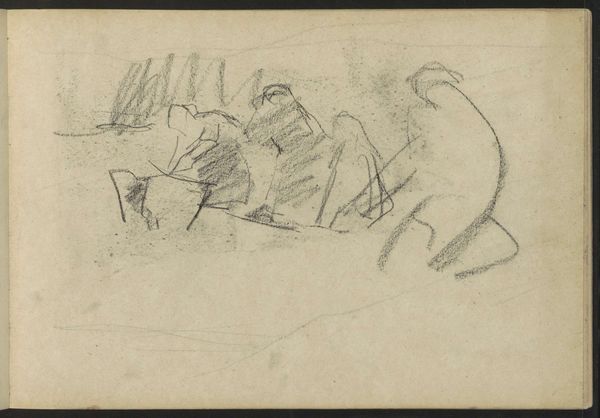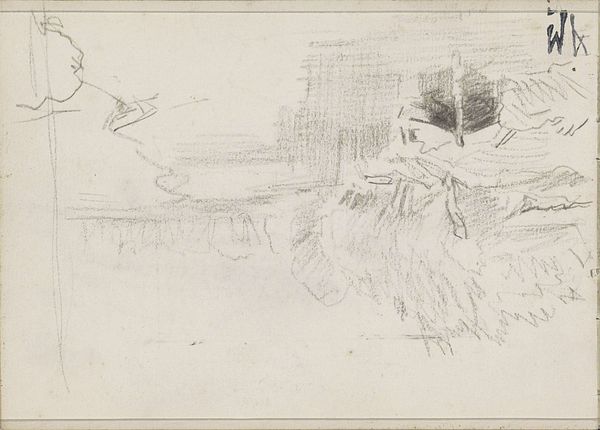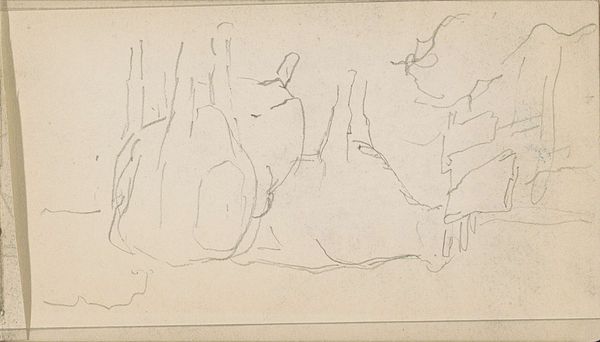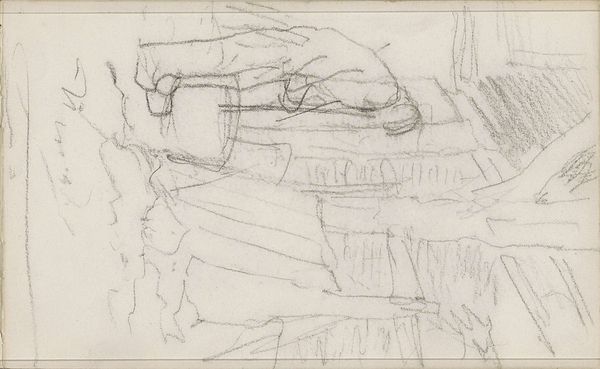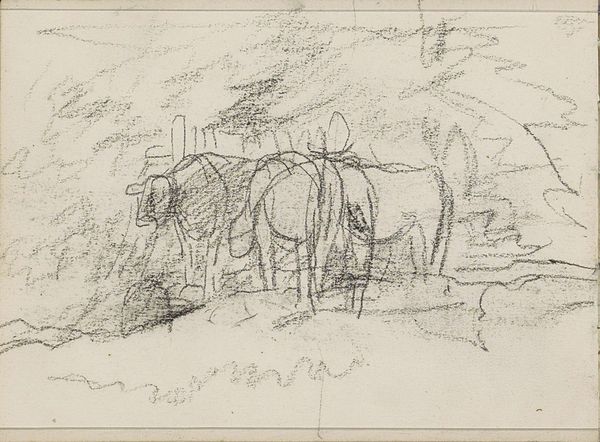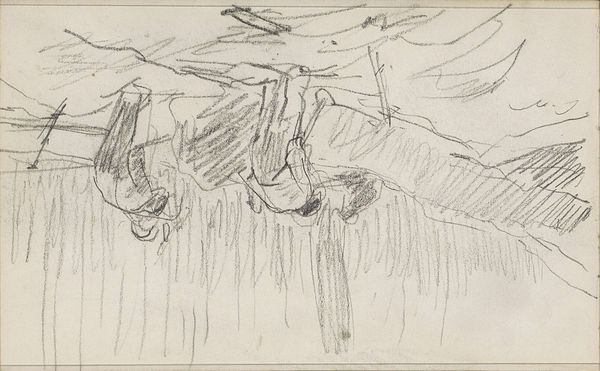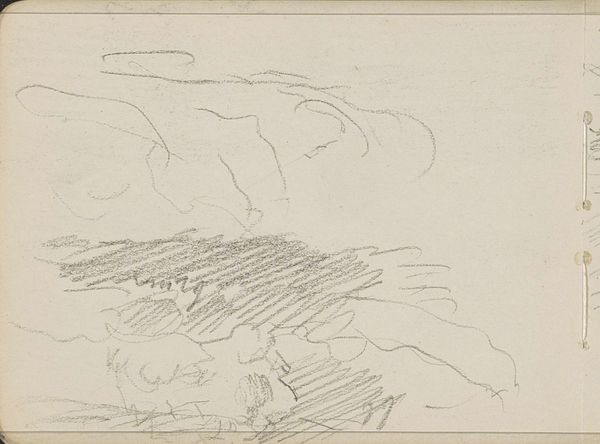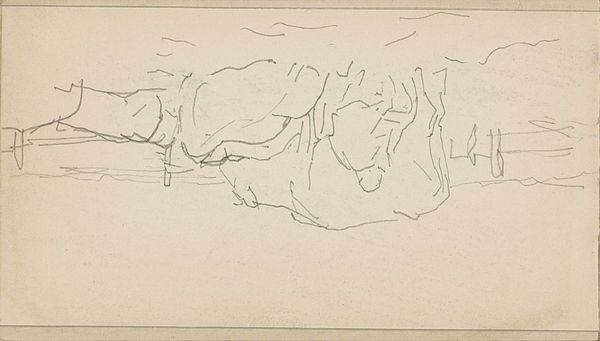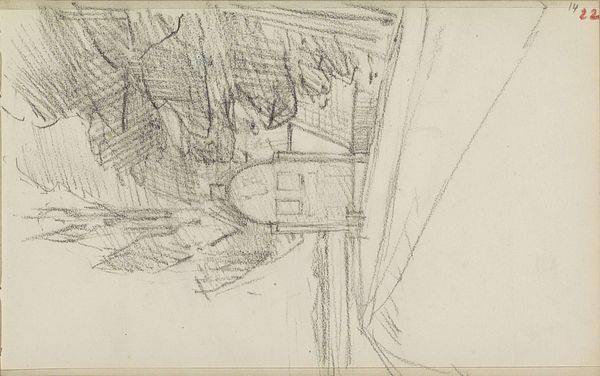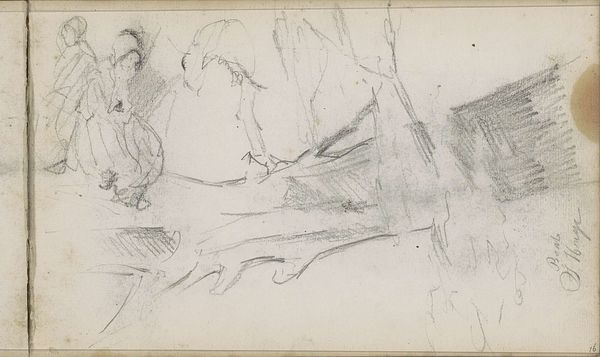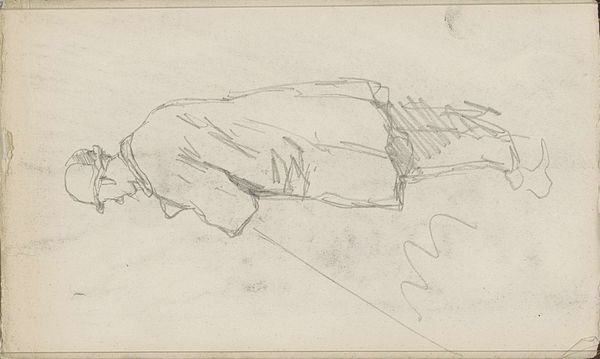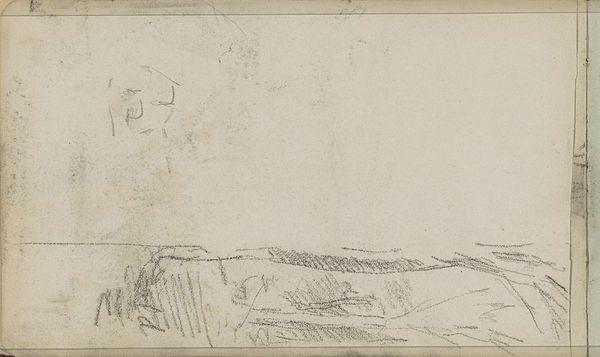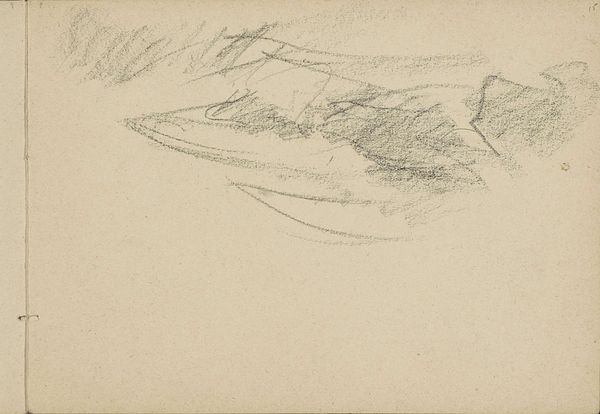
drawing, pencil
#
drawing
#
light pencil work
#
quirky sketch
#
impressionism
#
sketch book
#
landscape
#
personal sketchbook
#
idea generation sketch
#
sketchwork
#
pen-ink sketch
#
pencil
#
sketchbook drawing
#
sketchbook art
#
realism
#
initial sketch
Copyright: Rijks Museum: Open Domain
Curator: This quick pencil sketch, titled "Cows by a Hut on a Waterfront," is attributed to Anton Mauve, created sometime between 1848 and 1888. It's currently held at the Rijksmuseum. Editor: Immediately, I notice its fleeting quality—like capturing a scene that could disappear any moment. The light pencil work almost vibrates, giving a sense of movement to something as placid as grazing cows. Curator: Absolutely. Considering the historical context, Mauve was working in a period of immense social and economic change, particularly within the agricultural sector. These pastoral sketches highlight a specific relationship to the land and its resources. The drawing, being a quick, preparatory study, could be considered an extension of that ongoing negotiation between labor and environment. Editor: I see your point. The roughness in the line work feels deliberate, eschewing the highly finished quality expected in salon art of the time. In terms of form, that very quality points away from academic constraints. The overall composition focuses our attention less on idealized beauty and more on the rustic forms and simplified shapes within this pastoral landscape. It almost prefigures a post-structuralist approach. Curator: Perhaps. We must also note that sketchbook pages like these also offer insights into the production processes and studio labor of artists during that time. They aren't 'finished' works. These pages act more as workshops. The repetitive motion, material of the paper itself, the blunt pencil strokes…all these factors provide important information about what it meant to *produce* art in this time period. Editor: I suppose that the formal restraint actually lends it a certain visual power that resonates today. As a quick work, it still reveals the elemental structural components used by the artist in developing his personal visual language. Curator: Yes, looking beyond the formalistic properties, what the sketch does materially is evidence labor processes. I believe that helps give modern viewers the clearest look at nineteenth century production. Editor: Fair enough. Ultimately, despite different interpretations, both the sketch's visuality and socio-historical context offer something significant to a contemporary audience.
Comments
No comments
Be the first to comment and join the conversation on the ultimate creative platform.
